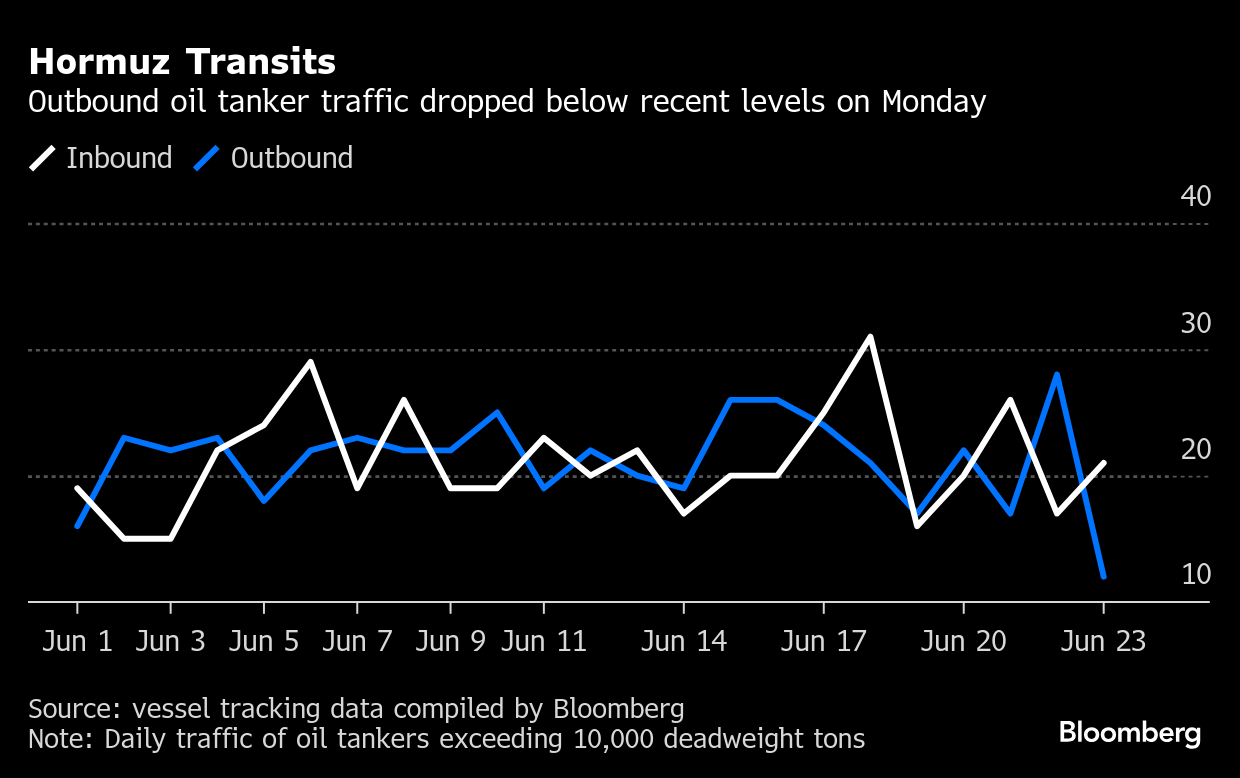Mideast Oil Flows Set to Rebound After Diving Monday
(Bloomberg) -- The flow of oil out of the Persian Gulf plunged on Monday — a sign that some owners have have been wary of the security situation — but are on course to recover sharply.
Outbound tanker shipments via the vital Strait of Hormuz, a waterway handling a fifth of the world’s oil, declined by 45% compared with average flows observed this month, according to vessel tracking-data compiled by Bloomberg.
However, early data for Tuesday appear to show a sharp recovery — possibly a sign that vessel owners are becoming more comfortable about security risks amid a fragile ceasefire between Israel and Iran.
Still, safety in the strait remains in question, with the US accusing both parties of breaching the truce agreement announced by President Donald Trump within hours of its declaration.

The seven-day rolling average of oil tankers departing the Persian Gulf dropped to 20, from an average of 22 ships since the conflict began on June 13. Inbound flows were in line with the average.

Transits of liquefied petroleum gas tankers dropped to about one-third of previous levels on Monday, mostly reflecting inbound traffic. Liquefied natural gas carriers were within daily norms of 5-6 vessels. Inbound transits of bulk carriers remain below norms.

NOTE: This tracker will be published during heightened tensions involving Iran, and aims to capture traffic for all classes of commercial shipping.
©2025 Bloomberg L.P.





